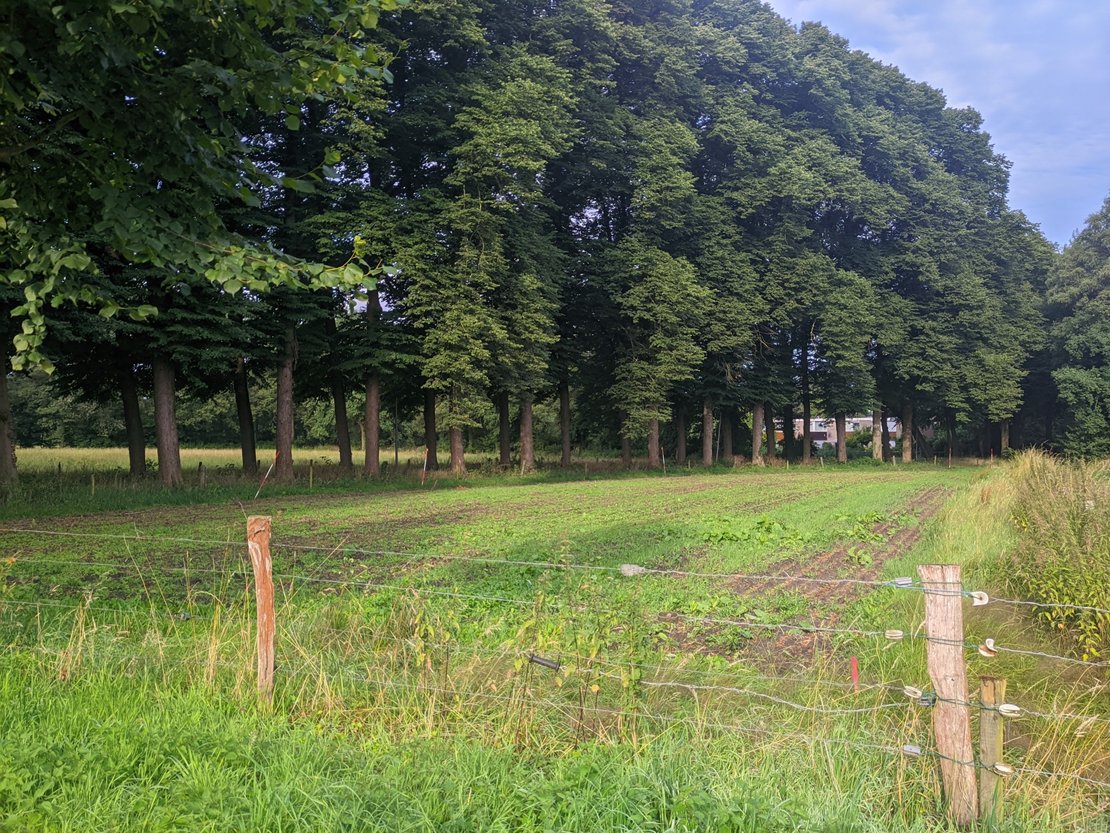In order to limit the impact of climate change, actively removing carbon from the atmosphere is necessary. However, there is currently no cost-effective and scalable way of achieving this. At the UT.Fieldlab of the University of Twente, researchers from UT’s Climate Centre are testing an efficient and scalable solution to this problem: capturing carbon by cultivating fast-growing miscanthus. The idea is that when grown, the grass can be harvested and injected underground for long-term storage, or used to make building materials. The grass is being grown on a 0,5 hectare field on the edge of the campus and the Abraham Ledeboerpark.

The (still empty) field where the miscanthus is sown
Turning CO2 into biomass
When plants grow, they take CO2 from the air and convert it into carbon (C). A forest, for example, captures between 5 and 10 tonnes of CO2 per hectare annually. However, this natural cycle is temporary: when a tree dies, it rots, and the carbon is released back into the atmosphere. This naturally limits the potential of forests to capture carbon.
However, if we could store the biomass permanently, the captured carbon would be removed from the atmosphere indefinitely. This is the idea that we would like to test with this project. Not with a slow-growing forest, but by cultivating miscanthus: a type of grass that is strong, relatively easy to grow and that has high yields. On paper, the CO2 capturing potential of giant juncao grass is at least 10 times higher than that of a forest. When fully grown after two years, the grass can be harvested. One idea is to then cut the grass into small bits and inject it at least 1,2m deep into the soil for long-term storage – in the same location as where it’s cultivated, for maximum efficiency. Because there is little to no oxygen that deep below the surface, the expectation is that the biomass will not rot, keeping the carbon securely stored – much like the natural processes in peatland. But there are other options as well, such as using the grass to create building materials.
If successful, capturing and storing carbon in this way could be scaled up relatively easily, as giant juncao grass can be grown in many places globally. However, before that can happen many questions need to be investigated first.
Research questions
The most fundamental question is whether or not the biomass will behave as expected when stored underground. The effectiveness also needs to be compared to a baseline of the amount of CO2 that is stored when nature can take its course on a piece of land, since naturally-growing plants would store carbon as well. This will be monitored on-site. Operational emissions will also be determined using a Life Cycle Analysis (LCA).
Because environmental conditions and subsoil conditions could have a large effect on the effectiveness of this method, this research should be repeated on different locations with different conditions in the future as well. This could be done in partnership with farmers.
Another question is the effect on the soil and surroundings. While injecting the biomass into the soil could lead to soil enrichment, disturbing the soil in this way could also lead to reduced fertility. At the same time, growing a single crop continuously on the same patch of land leads to soil degradation and has a negative effect on its ecosystem. These effects need to be studied as well.
If the method works well and is cost-effective to scale up, socio-economic and ethical matters also need to be taken into account. If effective, capturing carbon this way could possibly be a way to create carbon credits and be a part of a farmer’s income stream. Alternative uses of the grass, for example processing it into building materials or injecting it in other places where the land is degraded to enrich it, is another option that will be looked into.









